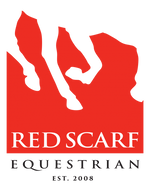
Sometimes it helps to dream a little. And in this moment of pause and uncertainty it feels good to dream of a time when the world will be back closer to the one that we knew, one of simple pleasures and joys, one even with all of its old challenges and shortcomings.
In dreaming, we find a road back to a place where we have been displaced from. In dreaming, we understand the importance of our finally being able to move on from the paralysis that we have come to endure, and from the weight of the uncertainty and caution that still lie before us. Still, the world will open again, like a tulip after the rain. We simply need the faith to wait to see it.

It is thus we dream today of travel to a faraway place. Close your eyes and feel the wind of the North Atlantic Ocean on your face as it tries to take your breath away. Listen to the wind make the voice of your companion almost impossible to hear. You can only see her smiling as she navigates the cliffs along the shoreline, her hand raised, pulling her windswept hair back behind her ear. And then there are the antics of the Atlantic puffin to think about. Thus it is that we travel far beyond home and couch to an island positioned in the North Atlantic, approximately equidistant between the northern tip of Scotland, Iceland and Norway: the Faroe Islands, the name deriving from the Old Norse, meaning “Sheep Islands,” a place where there are more sheep than people.

Here we find, as did the Celtic Monks of Ireland in circa the 8th century, a rugged and windswept land. But it was exactly this rugged landscape that they were looking for. The Monks upon their arrival no doubt smiled at their discovery of this wilderness or “desert” of isolation, a place to test and refine them in their spiritual journeys.

Who was that first Irish monk who set foot upon the Faroe Islands? What was his name? What were his dreams in venturing by sail to these islands? And what is more, was he the adventurer who brought horses along with him to help fulfil the work of establishing a monastic community, and thereby start the long process which culminates presently in the Faroe Islands Pony or Horse?
The Faroe Islands Pony or Horse is a very special breed of horse that has a very long history on the Faroe Islands. It is a presence that stretches back, it is said, approximately a millennium. Its height is in the order of 1.14 to 1.24 m. A robust horse with a stock neck and shorter legs, it is well adapted for the harshness of the climate. It adds its beauty to that of this magnificent landscape. It has, too, a “supplemental gait” called the tölt and the “flying amble.”

The Faroe Islands Horse at one point faced extinction, having been taken from the islands for work in the British mines because of its small size and strength. Indeed, the population of the breed got down to only four mares and one stallion before there was intervention to help protect the population in 1962. There are roughly 100 Faroe Islands horses presently. Should you venture here be sure to arrange to ride one of these magnificent creatures. (http://www.faroehorse.com)
We are confined to being armchair travellers only for the moment. In the meantime, the good people of the Faroe Islands invite us to take a virtual tour of their homeland (https://www.remote-tourism.com). In the meantime, we can plan and research and dream about the day when we can again venture faraway.
References:
https://books.google.ca/FaroeIrishHorsesb
https://books.google.ca/FaroeIslandsHorse
https://VisitFaroeIslands.com
Leave a comment